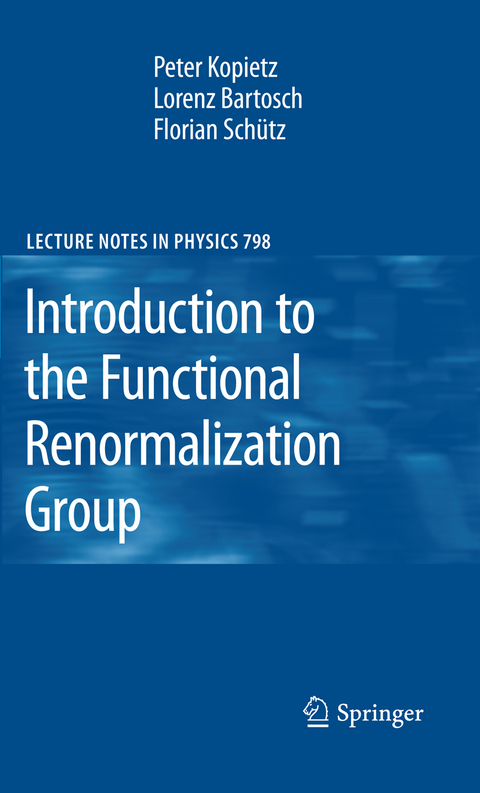Introduction to the Functional Renormalization Group
Springer Berlin (Verlag)
978-3-642-05093-0 (ISBN)
Dr. Florian Schütz promovierte 1998 bei Professor Dr. Dr. h. c. mult. Werner Kirsch, Ludwig-Maximilians-Universität München.
I Foundations of the renormalization group.- Phase Transitions and the Scaling Hypothesis.- Mean-Field Theory and the Gaussian Approximation.- Wilsonian Renormalization Group.- Critical Behavior of the Ising Model Close to Four Dimensions.- Field-Theoretical Renormalization Group.- II Introduction to the functional renormalization group.- Functional Methods.- Exact FRG Flow Equations.- Vertex Expansion.- Derivative Expansion.- III Functional renormalization group approach to fermions.- Fermionic Functional Renormalization Group.- Normal Fermions: Partial Bosonization in the Forward Scattering Channel.- Superfluid Fermions: Partial Bosonization in the Particle-Particle Channel.
From the reviews:
"The authors of this textbook provide a comprehensive introduction to the method, including its foundation in the renormalization group ... . an excellent introduction to the method, recommendable to anyone who is looking for a powerful method to deal with non-perturbative (and perturbative) problems in the continuum. The introduction is lucid and quite accessible. The book is definitely recommended for anyone interested in such an approach. ... it would serve well as a basis for an introductory course for advanced graduate and Ph.D. students." (Axel Maas, Mathematical Reviews, Issue 2011 h)| Erscheint lt. Verlag | 3.5.2010 |
|---|---|
| Reihe/Serie | Lecture Notes in Physics |
| Zusatzinfo | XII, 380 p. 68 illus. |
| Verlagsort | Berlin |
| Sprache | englisch |
| Maße | 155 x 235 mm |
| Gewicht | 165 g |
| Themenwelt | Naturwissenschaften ► Physik / Astronomie ► Allgemeines / Lexika |
| Naturwissenschaften ► Physik / Astronomie ► Theoretische Physik | |
| Schlagworte | functional renormalization group • phase transitions and critical phenomena • quantum many-body theory • Renormalization Group • Strongly correlated electrons |
| ISBN-10 | 3-642-05093-X / 364205093X |
| ISBN-13 | 978-3-642-05093-0 / 9783642050930 |
| Zustand | Neuware |
| Haben Sie eine Frage zum Produkt? |
aus dem Bereich




